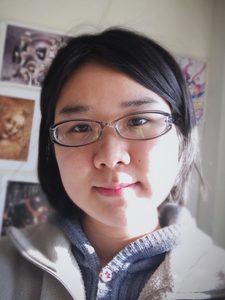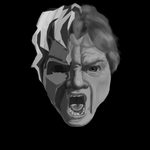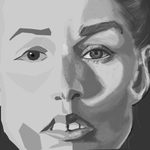
I take this show as a chance to look back at what I had from the past years and to explore what I want my works to be in the future.
I am influenced by works from many computer graphic concept artists; some are famous, such as Craig Mullins, Wlop and Dawid Planeta; others are less famous, artists who are active in online communities. I enjoy how they use this medium to create an entire narrative, to display their love and to express their fear (especially Dawid Planeta, who is said to use darker themed paintings for his feelings in depression).
I also choose this format because of the manipulative nature of computer graphics: I start working with a photo, but the end product could be far away from the original one. This virtual reality has the dream-like quality, that all the impossible can dwell inside of it, but it is also part of the imaginary space. I have dreams because they are alternatives of the world, they can be better, worse or simply, different. They can be so easy to obtain, or they can be impractical to access, and digital art can be a great way to show them: to show a world constituted of manipulated fragments of the “real world.”
All these images are all free-to-use stock images and photographs I found online. I did not choose to work with people around me mainly because I am intrigued by expressions with universality and cultural specificity. I know that the online images can be faked compared to me asking a friend to pose for me (and in fact, even more likely); the make-believe pictures must have some convincing features to convey these emotions.
The terms behind Creative Commons license are also fascinating to me, especially the connotation for letting one’s profile be remixed, adapted and built upon—actually, claiming attribution of a person’s face is an interesting move. I hope to expand my own practice on figure drawing, explore multiple styles in digital art, and bring some thoughts on the problem of image copyright in my works.
— Jean Liang ’20


